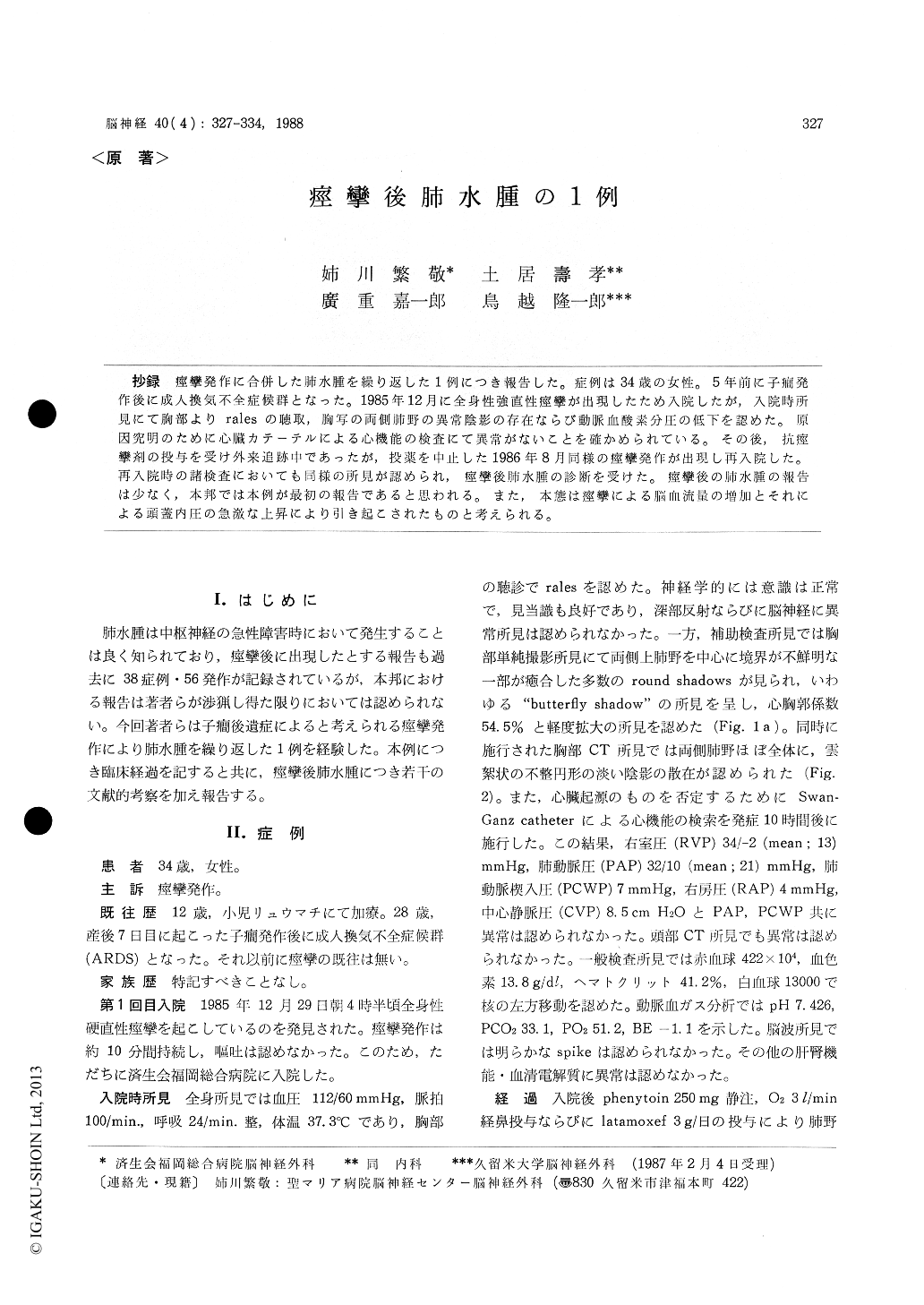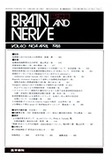Japanese
English
- 有料閲覧
- Abstract 文献概要
- 1ページ目 Look Inside
抄録 痙攣発作に合併した肺水腫を繰り返した1例につき報告した。症例は34歳の女性。5年前に子癇発作後に成人換気不全症候群となった。1985年12月に全身性強直性痙攣が出現したため入院したが,入院時所見にて胸部よりralesの聴取,胸写の両側肺野の異常陰影の存在ならび動脈血酸素分圧の低下を認めた。原因究明のために心臓カテーテルによる心機能の検査にて異常がないことを確かめられている。その後,抗痙攣剤の投与を受け外来追跡中であったが,投薬を中止した1986年8月同様の痙攣発作が出現し再入院した。再入院時の諸検査においても同様の所見が認められ,痙攣後肺水腫の診断を受けた。痙攣後の肺水腫の報告は少なく,本邦では本例が最初の報告であると思われる。また,本態は痙攣による脳血流量の増加とそれによる頭蓋内圧の急激な上昇により引き起こされたものと考えられる。
A 32-year-old woman was examined in the De-partment of Internal Medicine at Saiseikai Fukuoka General Hospital after a grand mal seizure on December 29, 1985. She had a history of eclampsia 5 years before but had had no evidence of convul-sive seizure. Chest examination revealed rales over the bilateral chest. The cardiac examination revealed no abnormalities. Laboratory data on ad-mission included a total white blood cell count of 13000/mm3. The electrocardiogram also failed to reveal any abnormalities. Analysis of arterial blood with the patient breathing room air revealed a PaO2 of 51.2 mmHg, PaCO2 of 33. 1 mmHg and a pH of 7.426. The chest film showed diffuse bila-teral nodular-appearing alveolar infiltrate and a normal cardiac size. Cardiac function test using Swan-Ganz catherter was performed after 10 hours of onset. However, no abnormalities in pulmonary arterial pressure (PAP) and pulmonary capillary wedge pressure (PCWP) were noted. She was treated with Latamoxef and supplementally inspired oxygen. A repeat chest roentgenogram taken 7.5 hours after admission showed marked improve-ment. She was discharged without any residual symptoms and continued as an outpatient under the administration of sodium valporate. However, the drug was discontinued because of the presence fo seizure was under suspicion.
On August 24, 1986, she was readmitted for pul-monary edema after another grand mal seizure. The clinical course was uneventful and was almost the same as the previous episode. She was treated with oxygen only, via nasal catheter.
Acute pulmonary edema manifesting soon after grand mal seizure has been recognized for years and only 19 pieces of literature, 38 cases have previously been reported. Furthermore, our case, presented here, must be the first report from Ja-pan.
Neurogenic pulmonary edema can occure in every disease with acute rise in intracranial pressure (ICP). It has also been reported that the cerebral blood flow during epileptic seizure was almost double and which built up ICP to be 1000 mmH2O. It may be plausible that the increase in ICP during epileptic seizure is enough to cause the pulmonary edema.

Copyright © 1988, Igaku-Shoin Ltd. All rights reserved.


